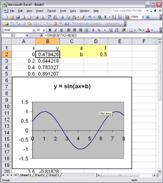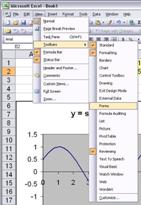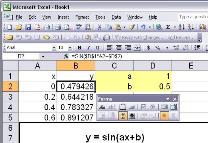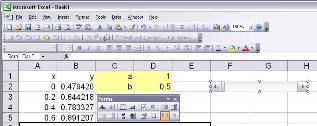
Click on image to see a larger view.

Click on image
to see a larger view.

Click on image
to see a larger view.

Click on image to see a larger view.
By right-clicking on the slider, you bring up the menu shown here:

Choose "Format control..." to link the movement of this slider to the contents of a cell.
We would like the value of b, in cell D2, to range from 0 to 1. However, slider-controlled cells must have integer values between 0 and 30000. The solution is that we link this slider to cell E2, with values ranging from 0 to 100, and then put the formula =E2/100 in cell D2.
If we want a second slider to control the value of a (in cell D1), ranging from –1 to 1, we link the slider to cell E1 ranging from 0 to 200, and then enter the formula =E1/100-1 into cell D1.

